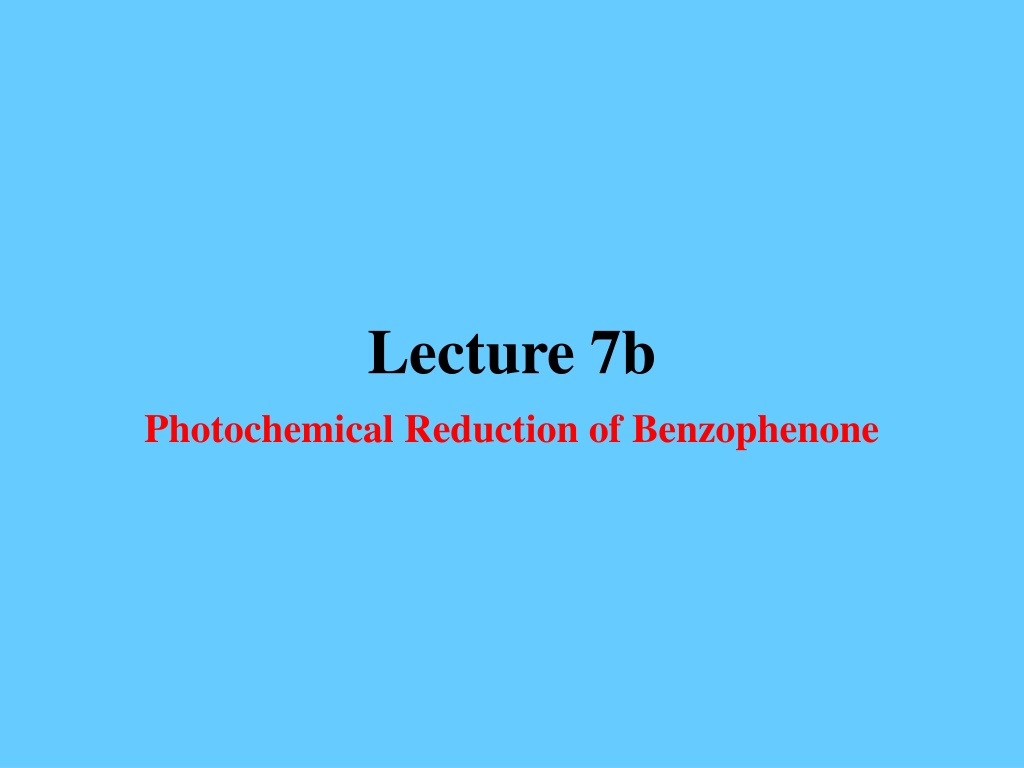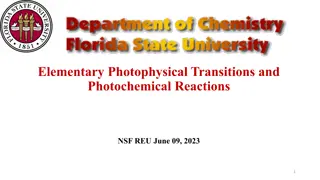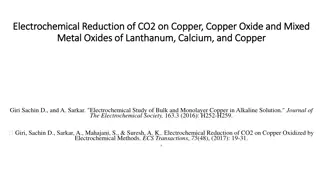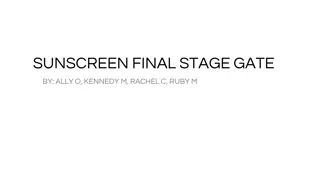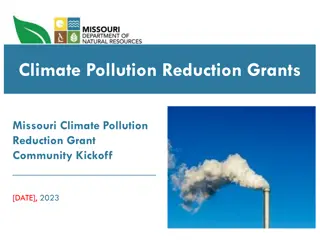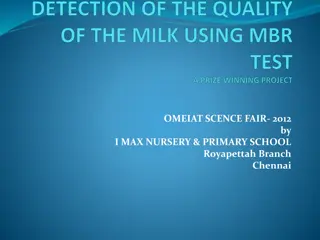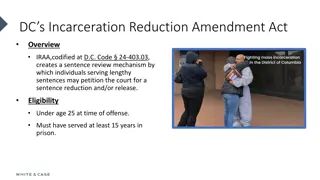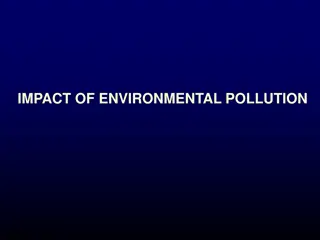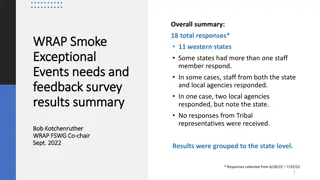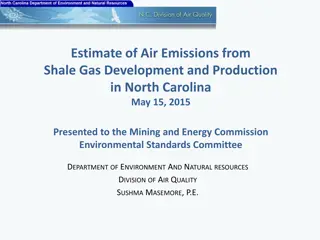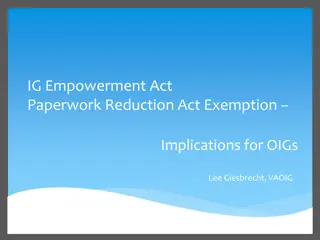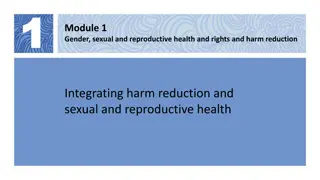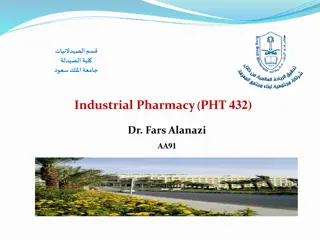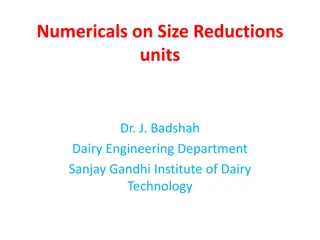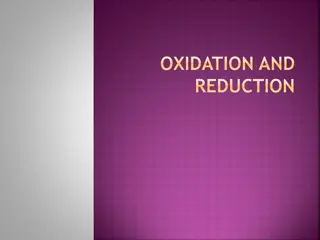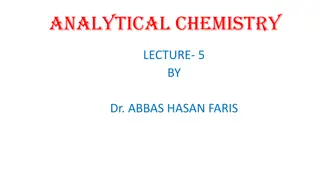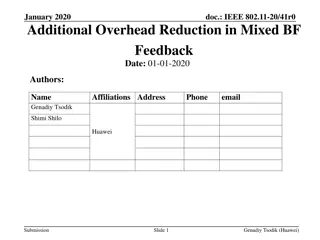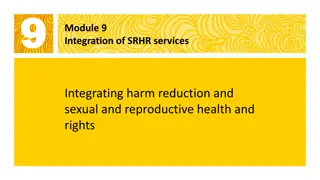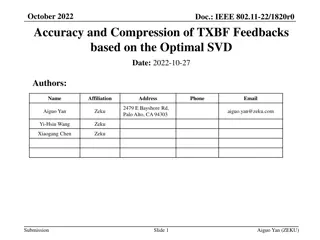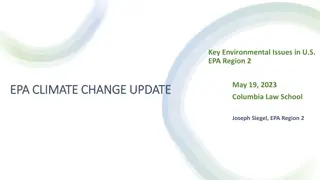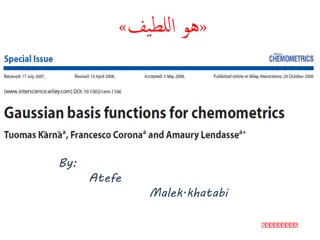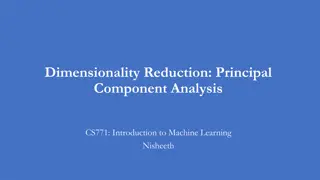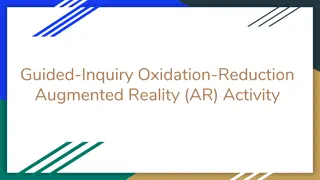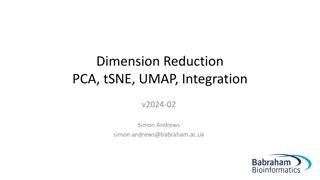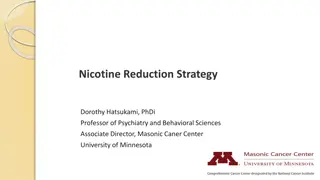Understanding Photochemical Reduction of Benzophenone
Photochemistry plays a crucial role in various chemical reactions and everyday applications. Benzophenone undergoes a photochemical reduction in isopropanol under sunlight, leading to the formation of benzopinacol and acetone. This reaction involves the excitation of electrons, formation of radicals, and subsequent radical propagation and termination steps. The process highlights the importance of photochemical reactions in synthesizing useful compounds.
Download Presentation

Please find below an Image/Link to download the presentation.
The content on the website is provided AS IS for your information and personal use only. It may not be sold, licensed, or shared on other websites without obtaining consent from the author. Download presentation by click this link. If you encounter any issues during the download, it is possible that the publisher has removed the file from their server.
E N D
Presentation Transcript
Lecture 7b Photochemical Reduction of Benzophenone
Introduction I Photochemistry is one sub-division of chemistry that possesses many everyday applications i.e., photosynthesis, in which plants use the sunlight to convert carbon dioxide and water into glucose and oxygen. h 6 CO2+ 6 H2O C6H12O6+ 6 O2 Many processes in the atmosphere are initiated by photons i.e., ozone hole catalyzed by chlorine radicals, smog, etc. The formation of vitamin D from cholesterol also requires sunlight to take place. Chloroform is converted to the highly toxic phosgene (COCl2) upon prolonged exposure to oxygen and light. h 2 CHCl3+ O2 2 COCl2+ 2 HCl
Introduction II Most chemicals are stored in brown-tinted glass containers to suppress their photodegradation. Many medicine bottles are brown in color as well because the sunlight would convert triplet oxygen into singlet oxygen which is highly reactive i.e., converts C-H groups into C-OH groups, which can further be oxidized, thus destroying the drug. Since light is a form of energy, it also used in many reactions chemical reaction like [4n] -cycloaddition and other pericyclic reactions, radical reactions involving hydrocarbons and halogens (i.e., chlorination of toluene to form benzyl chloride in industry) and the isomerization of alkenes (i.e., trans-stilbene is converted in cis-stilbene). Many polymerizations are started by photoinitiators (i.e., AIBN, benzoyl peroxide). These compounds decompose upon absorbing light to produce the free radicals for radical polymerization.
Benzophenone Benzophenone itself is used as UV-initiator in UV-curing applications such as inks, imaging and clear coatings. It is also added to perfumes and soaps to protect their colors and scents. Its addition to plastics allows for a clear packaging while still being protected from UV-light ( max=252, 333 nm in cyclohexane). Substituted benzophenones are used in some sunscreens (i.e., oxybenzone, dioxybenzone), but their use is also controversial.
Theory I In this experiment, benzophenone undergoes a photochemical reduction in isopropanol to yield benzopinacol and acetone. The sunlight excites an electron of the -bond into an anti- bonding orbital ( *), resulting first in a singlet state that rearranged to a triplet state.
Theory II The highly reactive benzophenone diradical abstracts a hydrogen atom from isopropanol, which results in the formation of two radicals. Next, the isopropoxy radical reacts with another benzophenone molecule to form acetone and form a second benzhydroxy radical. Two of the benzhydroxy radicals then combine to form benzopinacol, which terminates the radical propagation.
Theory III Jablonski Diagram * n z S2( , *) * a n a z isc * n a z S1(n, *) T2( , *) * a n a z T1(n, *) h P * n a z aa S0
Theory IV Since the transition S0 to S1 is symmetry forbidden ( =333 nm), the transition from S0 to S2 ( =252 nm) is the transition with the lowest energy. Thus, photons with a wavelength in the UV-range are needed to cause this transition to occur. The resulting singlet S2( , *) excited state quickly decays into the energetically lower S1(n, *) state. Aryl ketones like benzophenone then undergo rapid intersystem crossing (isc) of the S1(n, *) excited state to an energetically very close T2( , *) state (In the singlet state, the two electron possess opposite spins ( ) while the electrons have the same spin in the triplet state ( )). The latter quickly and quantitatively decays to the lower energy T1(n, *). The reverse process requires a photon with a wavelength of =525 nm. If no other reagents are present this excited states will return to S0 primarily by phosphorescent decay (P). Most aliphatic ketones cannot react in the same way do because their intersystem crossing rates the S1(n, *) to T2( , *) state are slow and the wavelength required for the S0 to S2 transition is much shorter.
Theory V The rate of the reaction depends on various parameters i.e., the amount of UV-light, the absence of quenchers, the absence of bases, etc. It is very important that the vial used in the reaction is clean and transparent to UV-light. The storage in bright sunlight, which has a high UV-Vis component, will then allow the reaction to proceed smoothly. The absence of quenchers (i.e., oxygen) is critical as well to ensure that the benzhydroxyl radical can be formed in reasonable quantities and can react as described above. It is also important that there are no bases present because the reaction would afford benzhydrol instead of benzopinacol. Since traces of alkali leach out of many cheap glasses, a trace amount of glacial acetic acid is added to the reaction mixture.
Experiment I Dissolve benzophenone and a small drop of glacial acetic acid in warm isopropanol (40-50 oC) in a the 6-dram vial Close the vial immediately and tightly making sure that the seal is placed inside the cap. Label the vial with a tape that is attached to the cap (include your full name, section, contents and start date, write legible) Why is the solution heated up? The solution will warm up when stored in the sun as well Why is it important to closed the vial immediately? Closing the vial with the warm solution will generate a slight vacuum in the vial, which reduces the chances of overpressure later on
Experiment II What should be done if the benzophenone did precipitate? If the benzophenone precipitates upon cooling, reheat the mixture to bring the solid back into solution. Make sure that the benzophenone remains in solution because it will not react in the solid state under these conditions. What happens then? The solution will be stored upside down in the sun for 7 days Submit the vial to the teaching assistant. When the vial is returned, place it in the ice bath Isolate the crystals by vacuum filtration Prepare a HPLC sample After drying the sample, acquire the melting point and the infrared spectrum What is the proper concentration? 1 mg/mL in isopropanol
Characterization I Infrared Spectrum (ATR) (OH)=3544, 3673 cm-1 (C-OH)=1025 cm-1 (CH, sp2)=3024, 3058, 3084 cm-1 (CH, sp2) (OH) (C-OH)
Characterization II 1H-NMR Spectrum 20 H (d, t, t) aromatic H 2 H (s) 2 OH
Characterization III 13C-NMR Spectrum C6H5- C-OH
